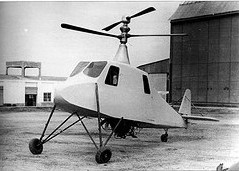
Federico Cantero Villamil
Encyclopedia

Spain
Spain , officially the Kingdom of Spain languages]] under the European Charter for Regional or Minority Languages. In each of these, Spain's official name is as follows:;;;;;;), is a country and member state of the European Union located in southwestern Europe on the Iberian Peninsula...
civil engineer
Civil engineer
A civil engineer is a person who practices civil engineering; the application of planning, designing, constructing, maintaining, and operating infrastructures while protecting the public and environmental health, as well as improving existing infrastructures that have been neglected.Originally, a...
known for the dams he constructed and planned along the river Duero and for his research on the aeronautical field, which is summarized in the Libélula española
Libélula española
The Libélula Viblandi, or Libélula española was one of the first helicopters invented 1924. It was developed in the twenties by Federico Cantero Villamil, a Spanish civil engineer also known for the dams he constructed and planned along the river Duero.-The project:Federico Cantero Villamil...
, a helicopter constructed by him.
Early work
His parents were the civil engineer Federico Cantero Seirullo and Isabel Villamil Olivares. He married Tránsito Cid, and they had two children. A few years later she died. Later, Cantero married Concepción García-Arenal Winter, a granddaughter of Concepción ArenalConcepción Arenal
Concepción Arenal was a Spanish feminist writer and activist.Born in Ferrol, Galicia, she excelled in literature and was the first woman to attend university in Spain...
, and they had six children.
He became an engineer 30 September 1896, with the first mark. He did his working practice during 1897 in Zamora, and in 1900 he began to work at the "Jefatura de Obras Públicas de Zamora". In May 1900 he asked and obtained a leave in order to work in hydraulics. At that moment, the governments of Spain and Portugal were planning how to exploit the hydroelectric potential of the river Duero.
The dams
In 1899 founds the society "El porvenir de Zamora" (The Prospect of Zamora), with the aim of funding and exploiting the dam of San Roman, near ZamoraZamora, Spain
Zamora is a city in Castile and León, Spain, the capital of the province of Zamora. It lies on a rocky hill in the northwest, near the frontier with Portugal and crossed by the Duero river, which is some 50 km downstream as it reaches the Portuguese frontier...
. Its construction lasted until 1903. This dam took profit of a "hoz" (meander) of river Duero that was 11.2 km. long. He opened a tunnel 1.5 km. long and built up the turbines and engines at the other side. By means of this, the unevenness from the reservoir to the turbines measured 14 meters, while the height of the dam was only 5 meters.
He also designed and projected the so called "Solución española de los Saltos del Duero", a project that planned all the dams in the Spanish side of river Duero.
Finally, he projected the actual construction of some of these dams, and also other dams at Burgomillodo, river Duraton
Duratón
Duratón can refer to:*Duratón, Segovia, the site of a Romanesque church.*Duratón , a river in Spain*Hoces del Río Duratón Natural Park ....
and river Eresma.
He patented in 1945 a "new type of hydraulic lockgate actioned by the very water of the canal or dam where they are installed".
Railway
In 1913 proposed a project joining ZamoraZamora, Spain
Zamora is a city in Castile and León, Spain, the capital of the province of Zamora. It lies on a rocky hill in the northwest, near the frontier with Portugal and crossed by the Duero river, which is some 50 km downstream as it reaches the Portuguese frontier...
and Orense through Puebla de Sanabria
Puebla de Sanabria
Puebla de Sanabria is a small town located in the north-eastern part of the province of Zamora in Spain, between the rivers Tera and Castro.It is the economic and political centre of the comarca of Sanabria.-History:...
by railway. It was one of the hardest engineer works of its time: the project had more than 100 tunnels, in particular the Padornelo
Padornelo (Spain)
Padornelo is a Spanish parish located in the council of Lubián in the region of Sanabria, 1260 meters height....
tunnel, 6 km. long. It was executed between 1921 and 1957 with a single track, although the design supported double track.
Aeronautics
Although Cantero's main work was that of the dams, since 1908 he was patenting other inventions in the field of aeronautics. His main interest was the problem of flight. It is in 1910 when he patented an ...idea to hold bodies in the air, and, if wanted, propulsion. Thirty-four patents followed the first one, being the last ones devoted to the helicopter he constructed: the Libélula española. Using the knowledge he acquired during thirty years of work, Cantero started to build up this helicopter in 1936, competing with Igor SikorskyIgor Sikorsky
Igor Sikorsky , born Igor Ivanovich Sikorsky was a Russian American pioneer of aviation in both helicopters and fixed-wing aircraft...
for flying a helicopter. Unfortunately, the Spanish Civil War
Spanish Civil War
The Spanish Civil WarAlso known as The Crusade among Nationalists, the Fourth Carlist War among Carlists, and The Rebellion or Uprising among Republicans. was a major conflict fought in Spain from 17 July 1936 to 1 April 1939...
began that year, and the helicopter stayed in Madrid
Madrid
Madrid is the capital and largest city of Spain. The population of the city is roughly 3.3 million and the entire population of the Madrid metropolitan area is calculated to be 6.271 million. It is the third largest city in the European Union, after London and Berlin, and its metropolitan...
(republican zone) while Cantero remained in Zamora (national zone). In October 1941 the helicopter was ready for test. The results of this test were lost, and the project of flying was decaying as Sigorsky tested his helicopter fruitfully in 1938.

